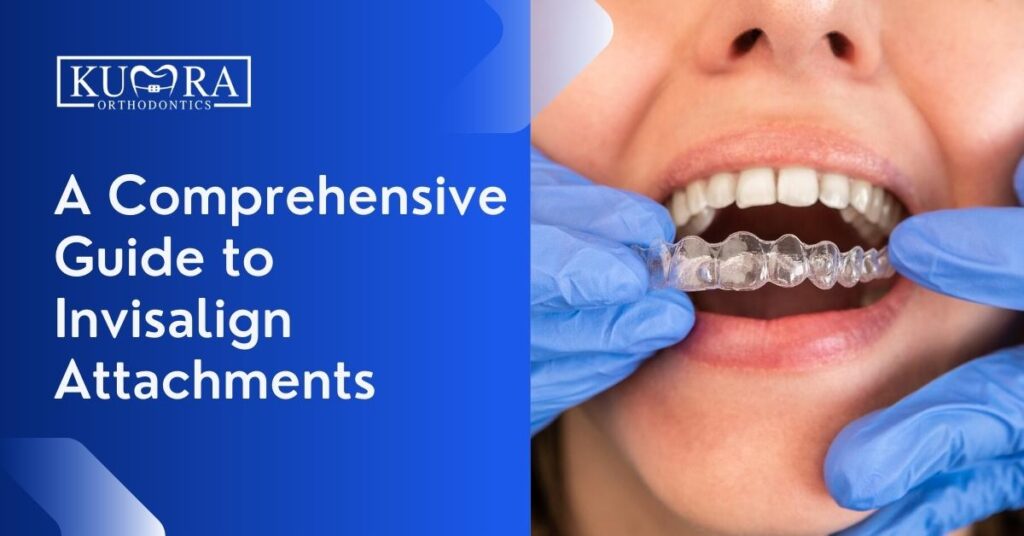Frequently Asked Questions About Invisalign: Everything You Required to Know
Frequently Asked Questions About Invisalign: Everything You Required to Know
Blog Article
Invisalign vs. Traditional Dental braces: Which Choice Is Right for You?
When thinking about orthodontic therapy, the option between Invisalign and typical braces provides a number of essential factors that warrant cautious evaluation. Invisalign supplies a very discreet choice with removable aligners, while typical braces provide a more visible yet efficient service for serious misalignment.
Introduction of Therapy Alternatives

In comparison, conventional dental braces include steel brackets and wires that are bound to the teeth. This technique applies continuous stress gradually to attain placement. While effective for complicated orthodontic problems, typical braces require normal check outs for modifications and can present difficulties in maintaining dental hygiene because of the difficulty of cleaning up about brackets and cords.
Both options have their merits, and the selection commonly hinges on details oral problems, lifestyle choices, and client compliance. Inevitably, consulting an orthodontic specialist is important for establishing one of the most ideal therapy plan tailored to private demands. Comprehending the nuances of each alternative can considerably influence the general success of orthodontic therapy.
Aesthetic Factors To Consider
A substantial factor affecting the option between Invisalign and standard braces is the aesthetic charm each therapy uses. Invisalign aligners are crafted from clear plastic, making them virtually invisible when put on. This discreet look is especially interesting young adults and grownups who may feel uneasy regarding their orthodontic treatment. The capacity to preserve an all-natural smile throughout the alignment procedure can considerably boost the individual's confidence in social and professional settings.
In comparison, standard braces are composed of steel brackets and cables, which can be extra obvious. While innovations in orthodontic technology have resulted in the growth of smaller braces and tinted elastics, standard braces still preserve an even more conspicuous account. For some individuals, the exposure of braces may hinder them from seeking required treatment.
Ultimately, the choice in between Invisalign and conventional dental braces may depend upon personal choices regarding aesthetics. Clients who focus on discernment frequently lean toward Invisalign, while those who are less concerned regarding exposure might choose standard braces. Comprehending the aesthetic ramifications of each alternative is crucial for making an educated choice that aligns with one's way of living and choices.
Comfort and Convenience

In regards to benefit, Invisalign aligners are detachable, making it possible for clients to appreciate their preferred foods without limitation and preserve ideal dental health. Brushing and flossing are streamlined, as the aligners can be gotten throughout these regimens, whereas typical braces call for mindful navigating around braces and cables.
In contrast, standard dental braces demand regular adjustments, making them much less practical for those with busy timetables. On the whole, the comfort and ease of Invisalign make it an appealing choice for many individuals seeking orthodontic therapy.
Treatment Duration and Efficiency
While both Invisalign and conventional braces are effective in remedying dental imbalances, the duration of treatment can vary significantly in between both choices. Normally, Invisalign therapy can take helpful hints anywhere from 12 to 18 months, depending upon the complexity of the case. The clear aligners work by gradually changing teeth right into their wanted placements, and normal follow-ups with an orthodontist aid make certain progress remains on the right track.
In contrast, traditional dental braces frequently need a longer dedication, typically varying from 18 months to 3 years. This is due to their set nature and using wires and braces, which can be more effective for complicated situations our website and serious imbalances (Invisalign). The treatment performance of traditional dental braces is well-documented, as they enable for precise adjustments and greater control over tooth movement
Inevitably, the option between Invisalign and typical braces might rest on both the anticipated treatment duration and the details oral concerns handy. Consulting with an orthodontist is essential, as they can supply customized recommendations based on specific demands, making sure the selected method aligns with preferred outcomes and durations.
Cost Comparison and Insurance Alternatives
Cost plays a considerable duty in the decision-making procedure for individuals taking into consideration orthodontic therapy, whether selecting Invisalign or typical braces. Typically, the cost of Invisalign ranges from $3,000 to $8,000, while conventional braces usually set you back in between $2,000 and $6,000. Aspects affecting these prices include the intricacy of the instance, the period of treatment, and geographical place.
Insurance policy protection can substantially influence out-of-pocket expenses. Numerous oral insurance plans supply partial protection for orthodontic therapies, yet the specifics can vary widely. It is vital for clients to examine their insurance policies to figure out the level of insurance coverage for either choice. Normally, standard dental braces may be much more regularly covered by insurance strategies contrasted to Invisalign, which some insurance companies classify as an aesthetic procedure.
In addition, several orthodontic techniques supply versatile settlement strategies, making both read treatment choices much more easily accessible. Individuals must ask about potential funding alternatives and discounts for upfront repayments. Examining the overall cost, consisting of insurance coverage benefits and settlement strategies, is vital for making an educated choice that straightens with both aesthetic choices and budget plan factors to consider.

Conclusion
In recap, the selection between Invisalign and typical braces pivots on numerous variables, including aesthetic preferences, convenience, treatment duration, and expense. Invisalign provides a very discreet, detachable choice that assists in dental hygiene and nutritional flexibility, while traditional braces might be preferable for complicated oral problems and typically come at a reduced rate factor. Ultimately, assessment with an orthodontist is vital to assess individual circumstances and determine one of the most suitable treatment choice for attaining ideal oral placement.
When taking into consideration orthodontic treatment, the option between Invisalign and standard braces provides numerous essential variables that merit mindful evaluation.Comparing Invisalign and standard braces discloses unique treatment options for orthodontic adjustment.While both Invisalign and typical braces are efficient in dealing with dental imbalances, the period of therapy can differ significantly between the 2 options.Expense plays a substantial duty in the decision-making process for people considering orthodontic therapy, whether deciding for Invisalign or conventional dental braces.In recap, the choice between Invisalign and conventional braces hinges on several factors, consisting of visual preferences, convenience, therapy period, and cost.
Report this page